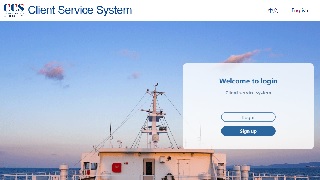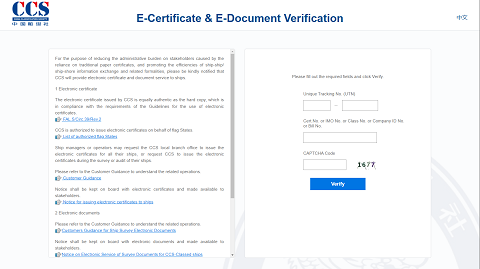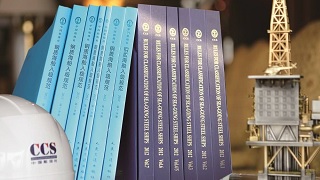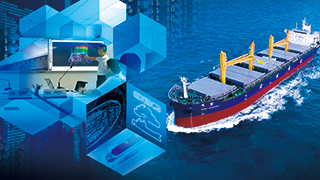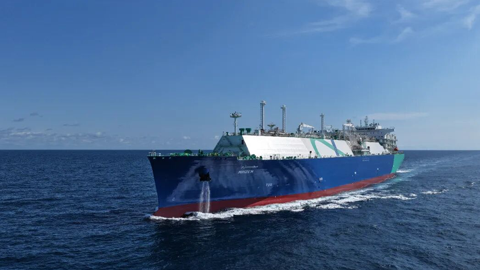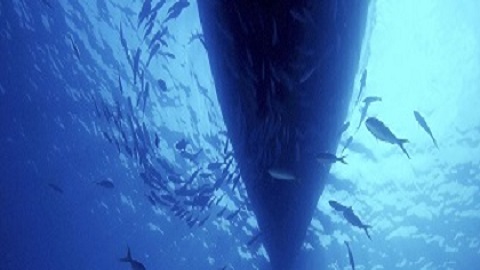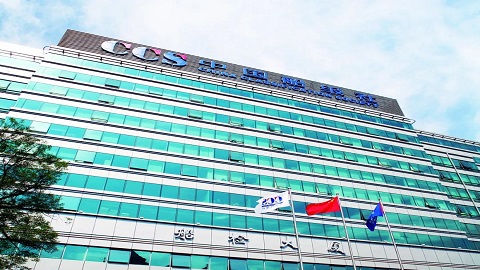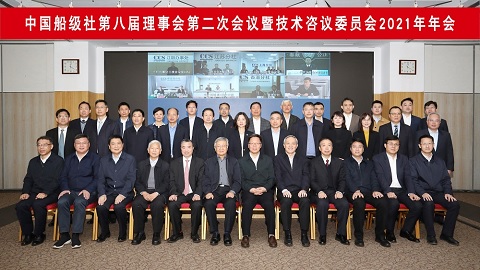By CCS Science and Technology Innovation Center

In recent years, the development of intelligent ship has attracted the attention of the industry . The global
shipbuilding powers and industry giants have increased their investment in research and development in the field of intelligent ships, so as to vigorously promote the development of basic technology and the construction of infrastructures for intelligent ships, focusing on the study on the standardization of intelligent ships . Meanwhile, the government has also issued appropriate guidance documents to support the development of intelligent ships, so as to comprehensively enhance the international core competitiveness of the intelligent ship technology . In addition, it should be noted that the development of intelligent ships involves many factors such as standards and safety risks . Therefore, its path selection is crucial to the future development . The clear goals and matters to be concerned should be clarified in terms of the key points, including regulatory standards, data use, man- machine integration, testing and verification, network security, and cross-border integration, so as to guide the development of the industry .
I. Development under the guidance of regulations and standards
The application of intelligent ship technology, especially remote control and autonomous navigation, has subverted
the ship driving mode, and the revision of supporting laws and regulations is a problem that needs to be solved in the development of intelligent ships .
The goal -based MASS rules to be promulgated by IMO in 2025 will have a major impact on the future
development of ship intelligence . In order to break through the traditional setting of manned ships and realize the high degree of autonomation of MASS and the unmanned ships,the regulations should be formulated in a timely and holistic manner, taking into account the priorities and clarifying the issues such as responsibilities and obligations, traceability and data governance .
The development of intelligent ships will promote the transformation of ship rules from the traditional rule systems
based on the experience to the goal-oriented rule systems based on the safety theory, risk analysis and experimental study,and the applicable objects of the rules also extend from the hull structures, machinery and equipment to data, algorithms,software, communications and other fields . With the gradual clarification of the technical path of intelligent ships, the specification requirements will no longer be limited to the target requirements for the intelligent development of ships,and the relevant technical requirements in the rules will also be continuously improved and enriched .

II. Data-driven operation optimization
With the gradual improvement of the ship intelligence,the wide application of high-precision sensors has provided
continuous, stable and reliable data collection methods to ships, enabling the ships to sense their internal and external environments and obtain the data . How to efficiently utilize the data wealth, tap its intrinsic value and achieve the best economic benefits under the premise of ensuring data security and data quality has become the internal need of the industry .
Data is the core basis for the development of ship intelligence . In the current digital transformation process of
ship equipment and systems, ports, weather, maritime and other fields, the scale and type of data collected by ships have been increased significantly, and the value of information has gradually become prominent . Ship route optimization,equipment maintenance, remote operation and maintenance,energy efficiency control, emission reduction, and ship operation management all rely on the data acquisition and integration in various fields, to provide more intelligent services . However, the currently collected data are of incompatible formats, poor quality, sparse information, and low security and reliability during data storage and transmission,resulting in the low reliability and credibility of intelligent applications relying on data . To this end, the industry should pay close attention to data management and perform study on data management technology, so as to ensure the safety and efficiency of the whole process of data collection, transmission,storage, integration and application .
III. Human-machine integration in intelligent navigation
The intelligent functions of ships are involved in the aspects of navigation, machinery, hull, cargo and energy efficiency . The operation scenarios cover the navigation
in open waters, navigation in narrow waterways, anchor handling operations, cargo loading and unloading, berthing and unberthing, etc . Considering different operational requirements,technology implementation paths and economic costs, different intelligent functions and scenarios need to be matched with different autonomous levels . The research and development of autonomous navigation technology is the mainstream at present and in the future . Specifically, autonomous navigation is a gradual development process: aided decision making -autonomous control, reduced manning - unmanned operation,with personnel on board – unmanned operation with personnel on the shore under full monitoring - intervention when necessary .
For the artificial intelligence, breakthroughs are easy to be made in specific fields with single tasks, clear requirements and application boundaries, rich domain knowledge, and relatively simple modeling . The application of artificial intelligence technology to realize the conditional autonomous navigation of ships in specific scenarios of open waters or a specific route, with specific cargo, will be a feasible development path in the future . It is recommended to take the lead in the application of autonomous navigation technology on small ships and specific routes . For large ships, it is recommended to focus on the application of aided decision-making, perception enhancement, condition-based maintenance, and autonomous navigation in open waters in the short term due to the limitation of the policies and regulations, technology maturity and safety assurance system .
IV. Testing and verification of virtual-real fusion
Artificial intelligence technology has brought infinite opportunities to the development of intelligent ships .However, the unaccountable algorithm, the complex and diverse system application environment, the coupling influence due to the subsystems of the complex system,and the network security of the system/equipment expose the intelligent ship to new and unknown risks in practical applications . The traditional testing methods based on functional verification are faced with the problems of difficult construction of test boundary conditions, high process safety risks and high costs, thus unable to ensure safety and reliability of intelligent ships .
The virtual-real fusion test technology fully integrates the advantages of virtual simulation and physical testing . The key elements of the test system are formed by virtual ships, virtual navigation environments, model ships/real ships, and actual navigation environments . The virtual simulation technology is used to establish the information associations between the real and virtual worlds . Further, the virtual ship-virtual scenario,the real ship-virtual scenario and the real ship-real scenario test methods are adopted to form an intelligent ship test system based on virtual-real fusion from the perspective of function and performance testing .
For the closed-loop comprehensive test and verification method system of intelligent ships, with the virtual simulation as the preliminary test, the model test as the pilot test and the shipboard verification as the final test, a consensus has been reached in the industry at present, which will promote the fundamental development of the intelligent ship certification system . In the design process of intelligent ships, the virtual simulation verification technology will be used to evaluate the completeness and safety of the design plan . After the optimization of design plan, the feasibility of the full-scale application will be evaluated through model experiments .Finally, the comprehensive test evaluation will be completed through the full - scale ship trial experiment, to balance the implementation cost, efficiency and risk control of the verification system, and the test verification will be also extended from the verification of the functional implementation completeness to the verification of system robustness and reliability .
Cyber security is the basis for ensuring the security of intelligent ship data and communication . The test content generally includes the security vulnerability scanning,penetration testing, load testing, stress testing and performance testing . By simulating the ship network and communication environment, a virtual cyber range is established, and the cyber security of the ship system and equipment is tested with reference to the real historical data and virtual data of the ship .Meanwhile, the system and device logs and traffic data are collected, and multi-source data analysis is carried out based on an appropriate network attack model, so as to evaluate the compliance of the system and equipment with the expected cyber security requirements .
Algorithms are the core to ensure the safety of navigation strategies and behaviors of intelligent ships . Through model-in-the-loop and software-in-the-loop testing, the large-scale data sets are used for the repeated regression verification on core algorithm models, including the perception, decision-making and control . A sophisticated algorithm evaluation system is adopted to assess whether the algorithm achieves the expected functions and meets the reasonableness, safety,reliability, stability and interpretability requirements, so that the risk and consequences of algorithm failure are controlled at a tolerable level .
V. Resilience protection of ship network
With the development of ship intelligence, the online monitoring and remote control capabilities of ships are enhanced continuously, which will expand the network threat attack surface of ships . As a result, ship cyber security will become an important factor affecting the sustainable,safe and reliable development of ship intelligence . Satellite communications, ship network architecture, border protection and crew cybersecurity awareness will all become the vulnerabilities affecting ship cybersecurity . In order to improve the resilience of ship networks to cyber incidents, international organizations such as IMO, IACS and ISO/IEC have actively carried out relevant studies . Among them, IACS's unified requirements documents E26 and E27 on ship cyber resilience will come into effect on January 1, 2024, and the classed ships,for which construction contracts are signed thereafter, shall meet the relevant requirements .
Improving the security of intelligent ship information network is a necessary step to strengthen the innovation of intelligent ship survey and testing technology and ensure the high-quality and safe development of intelligent ship technologies and products . Ship cyber security runs through the full life cycle of the ship, and the resilience of the ship network should be continuously improved by means of identification,protection, detection, response and recovery .

VI. Horizontal and vertical coordination of industry ecology
Ship intelligence, with the ships as the carrier, has the characteristics of cross-industry, cross-department, multi-field and multi -disciplinary, vertically running through the upstream and downstream industrial chains of the shipbuilding industry with data as the link, and forming a new industry form that integrates scientific research,design, construction, operation and survey for coordinated development . Meanwhile, the industry ecological value chains are horizontally connected, covering the intelligent ships, intelligent ports, intelligent logistics and intelligent supervision . The integration of intelligent ships into horizontal value chain information and the expansion of the optimization decision-making capabilities of intelligent systems will become a research and development focus .Building an ecology characterized by the horizontal and vertical coordination of upstream and downstream shipping industry is also a necessary condition for the development of intelligent ship technology .
The development of ship intelligence should be driven by innovation, to vigorously promote the wide application of new technologies such as digitalization and intelligence, improve the compatibility, coordination and openness with intelligent development in ports, navigation assurance, supervision, survey and insurance, and facilitate the technological and industrial integration . Thus, the intelligent ship technology system will be further deepened, a data sharing mechanism will be built, the value of data will be fully tapped, and more efforts will be made for the research and development of industrial software . Thus,an industrial collaborative R&D ecosystem will be built from the aspects of research and development support, tool software,data collection and model development, so as to promote the rapid development of intelligent ship technology, in this way making scalable and reproducible technical achievements, and supporting the high-quality development of ship intelligent
technology .
Note: If you need to reprint, please indicate the source of the information.

